Updated for 2025 – the ultimate kit list for a wild camping adventure in the UK !
After an epic day walking in the mountains you find the perfect wild camping location, far from civilisation and with awesome views. You start to set-up camp and then realise you’ve forgotten an essential piece of kit. Don’t be this person! (I’ve been there and it’s not cool..) Make your next wild camping trip one to remember by ensuring you don’t forget these kit list essentials.
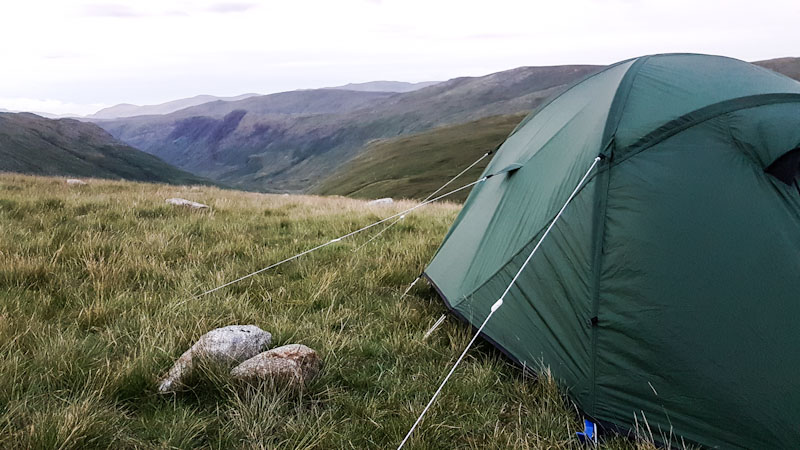
Kit List Essentials
This list covers what I consider to be the essential items for an enjoyable overnight wild camping mountain adventure in the UK. Packing is always a fine balance, with comfort v weight a key compromise and very much down to personal preference (or tolerance). That said with experience comes wisdom and having been that guy lugging a ridiculously overloaded pack up a steep mountain path (Kirk Fell to be precise, and it’s not pretty!), I have over the years honed my wild camping set-up. Below you’ll find the essentials I’ll pack for a 3-season overnighter, with some personal insight and gear recommendations.
Towards the end of the list are a few less obvious items, which weigh next to nothing and may well save your bacon (or ensure you can cook it!) should something unexpected happen.
I’ve created a handy wild camping kit list pdf download, with check boxes and space to add any personal essentials you may have.
Please note – as an Amazon Associate, I earn from qualifying purchases. It doesn’t cost you anything extra, but your purchases help support the site. Thanks!
Pack
Backpack
As a rough guide a capacity of between 35 – 55 litres should be sufficient, however ultimately the backpack you require will depend upon how much gear you intend to carry, the season, length of trip etc. For UK 3-season overnight wild camping I have the choice of 2 pretty minimalist Berghaus Arete backpacks (now discontinued) – 35l and 45l versions. Both have little in the way of back support – hence they are light, and therefore best suited to a lighter load (that’s the theory!). I’ll use the former when solo bivvying, and the latter when carrying a tent (or part of) or some luxury items!
If I were buying new today I’d be looking at backpacks such as the Osprey Kestrel 48, Deuter Gravity Expedition 45+ (this looks like a bad boy backpack!), the slightly cheaper Alpkit Orion 45L or perhaps something a little different like the super versatile Berghaus Centurio 45.
Waterproof Liner
If your backpack isn’t waterproof then you’ll need to consider how you’ll keep your gear dry if it rains (I always plan for rain!) – sleeping in a soggy sleeping bag ain’t fun!
You can use a large dry bag such as the Lomo 40L Roll Top Dry Bag (with viewing panel!), or I personally use a rubble bag – available from all good DIY outlets!
Shelter
Tent
A tent is generally my preferred option to shelter from the elements – get the right one and you can sleep, cook, stretch, chill and even have a wee (just saying!) without leaving the confines of your portable cocoon.
For me a minimum of one vestibule is a must – to allow for wet gear storage and cooking, I also like to be able to sit up in a tent – who wants to cook lay down?!
I also prefer self standing tents – they are quick to erect and great in the summer months when a flysheet is not necessarily needed – although if raining you do risk getting your inner a bit wet when putting it up! I also like side entry/opening tents, where you can take in a full-on mountain vista from the comfort of your sleeping bag – heaven!
When carrying a tent I’ll split the load (in theory halving the weight) with my buddy, removing it from its bag and folding it to fit into my backpack.
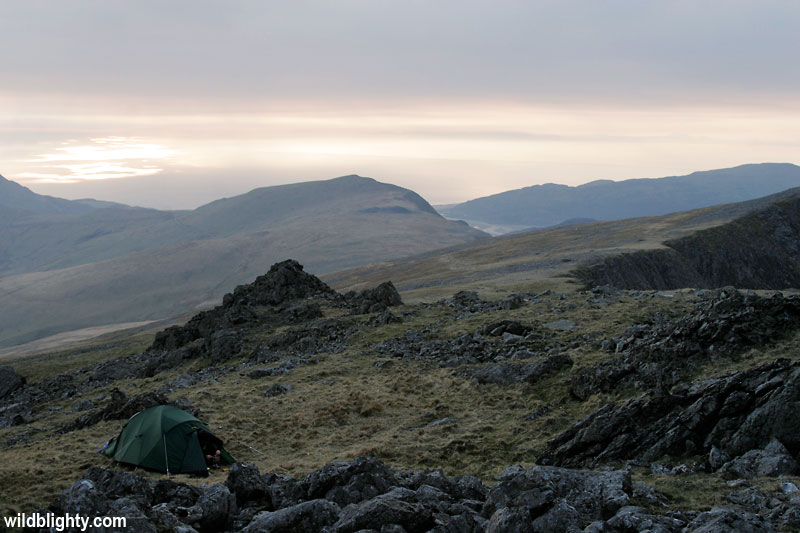
I currently own the Vango Torridon 200 (now discontinued), although mostly end up using my buddies Terra Nova Quasar – the legendary mountaineering tent is pricey however delivers a very big bang for the buck – its a 4-season tent, is super roomy, warm and has a strong geodesic design – I’ve summit camped in high winds and torrential rain and been battered by heavy snow and this thing hasn’t moved! In fact its previously been used on Everest expeditions (though not by me)!
If I was in the market for a new 2-man tent today I be considering options such as the MSR Elixir 2 or Hubba Bubba – both popular 3-season backpacking tents. I do like Vango tents also, my personal experience is they are very robust tents and of course its good to support a Scottish brand – consider options such as the Vango Banshee 200 or an F10 (Force Ten) technical tent.
As a side I do currently have my eye on a 1-man tent – I’ve lay down and sat up in the Alpkit Soloist XL and did like the size (I’m just shy of 6 foot) and general feel of the tent. Other options for consideration include the MSR Elixir 1 and Vango Nevis 100.
Bivvy
If I am solo camping and the forecast is good I will on occasion go with a bivvy – I love the simplicity, speedy set-up and small pack size – sometimes it just feels like the right thing to do!
Of course another advantage is the flexibility of where you can sleep – only a small footprint is needed, which opens up options such as rock slabs or summits with little flat ground (where pitching a tent would pretty much be a non-starter) – Tryfan maybe?!
I own the stealthy green OEX Bush Pro, another popular bag is Alpkit’s Hunka XL.
Sleep System
Sleeping Bag
A synthetic or down sleeping bag with a temperature rating to suit the conditions. I personally take extra layers with me and go for a lower rating and therefore less bulky bag – but that wont be for everyone, a night being freezing cold can be utterly miserable I can assure you!
I have an old Vango Venom 300 down bag (temp rating 0 to +25) for warmer/dry nights, and an even older Mountain Equipment Firewalker II synthetic bag for cooler conditions (temp rating down to an extreme of -12). I always take these temp ratings with a pinch of salt – If I knew it was due to be anything near -12 I’d be buying a warmer bag or checking into the YHA (of which I am a member – join here!)
Sleeping Mat
A self inflating sleeping mat is the comfier option – though of course they can be susceptible to puncturing (which has happened to me). That said I currently use a short version of the Therma-a-Rest ProLite, other brands are available and you can spend as much or as little as you see fit!
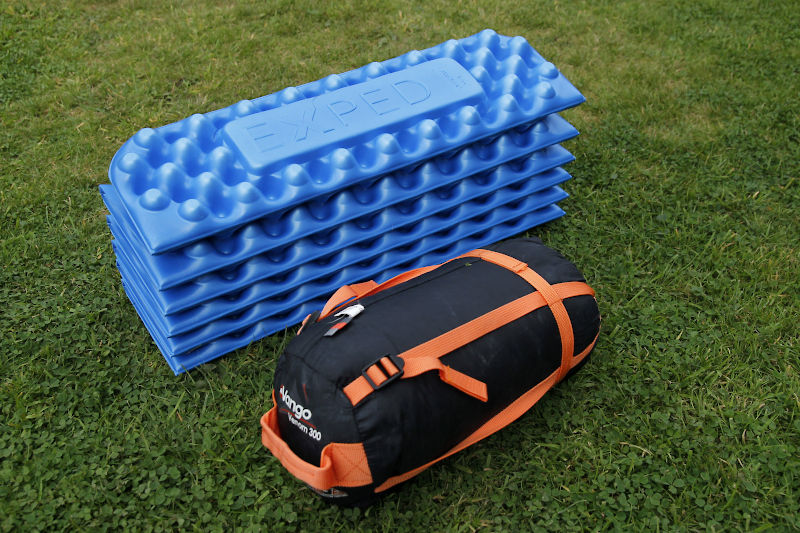
A more traditional (and generally cheaper) foam camping mat can be used – I very recently invested in an EXPED Flex Mat Plus M – essentially its a thick closed-cell foam mat, surprisingly comfy (for a piece of foam) and very lite considering how bulky it is! On the latter – it needs to be attached (tightly) to the outer of the backpack, which of course means extra space inside.
Having both provides the ultimate flexibility, and I’ll use in combination on a winter camp – providing 2 layers between me and the frozen ground (brrrrrrr)!
Cooking
Cooking Stove
A stove for cooking and to boil water for dehydrated meals/water purification/hot drinks. I use the classic MSR PocketRocket with a foldable gas canister stand – the latter in theory stops me from having to hold the pan when cooking on uneven or slightly sloping ground. Worth a look also is the ever popular Jetboil Zip Stove – which includes an integrated pot/cup/jug!
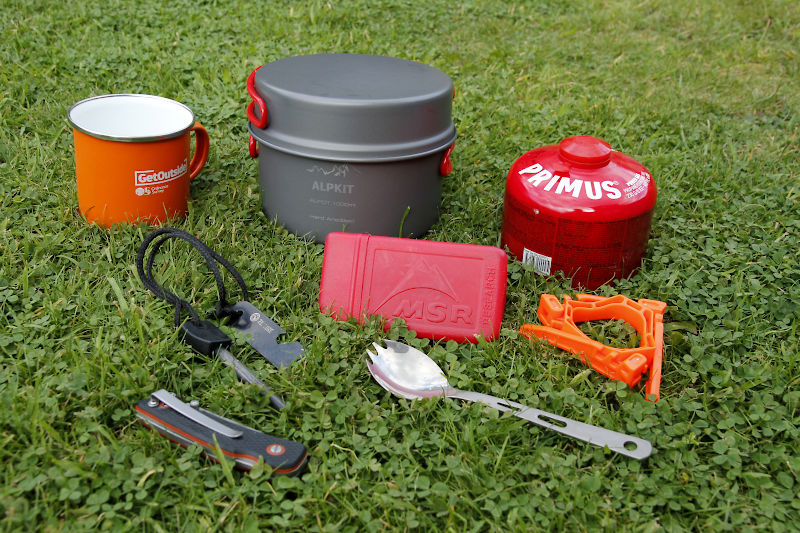
Cookware
I generally carry a pan & lid (which I’ll eat from), Mug, Spork and Folding Knife – the latter being sharp enough for all round usage.
Fire Steel
My choice of Fire Steel is a Light my Fire Swedish Army Firesteel. Incidentally I lost mine and for some reason went with a cheaper alternative, namely the 2XPLORE Ignite Firesteel, which whilst it does work (and includes a handy whistle) I personally find the striker to be a little fiddly and therefore not as consistent at producing a spark. Alternatively carry matches or a lighter.
Cleaning Sponge
Oh the humble cleaning sponge! If you haven’t guessed its for cleaning cookware during your trip. This item is on my kit list from experience, I once drank coffee from a pot previously used to heat some baked beans – the resulting ‘boffee’ was unpleasant to say the least! Note – I only use water to clean with – thus avoiding the possibility of introducing any cleaning products into the land or any nearby water source.
Hydration (aka Water)
Water purification
In the olden days I’d boil water and carry water purification tablets as a backup – I’ll potentially still do both. However nowadays I use a LifeStraw personal water filter – assuming I will be passing water sources. As an alternative I do see people using water purification bottles, the 75cl Water to Go is one such option, at a price !
Water/Water Bottles
Water is super heavy and whilst its tempting to take more I personally carry only 1 – 2 litres, depending if there are water sources on the intended walking route etc. A bottle allows you to easily collect water from a stream or lake, and having 2 covers you incase you drop one, and also allows for clean water in one and ‘dirty’ water in the other.
I use the Nalgene Triton Narrow Mouth Bottle – which for me is preferable over a wider opening mouth simply for the purposes of limiting water loss if you drop (or knock over) the bottle – it’s happened to me and it’s surprising how quickly a wide opening bottle will empty when you don’t want it to!
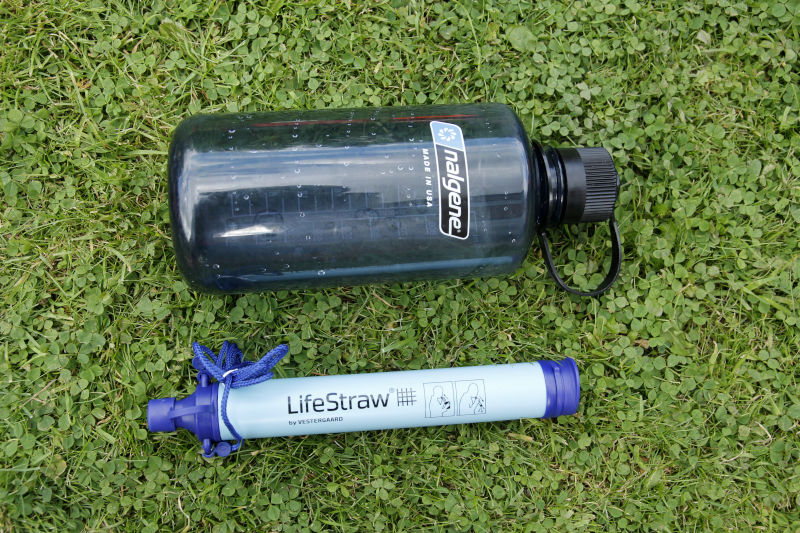
Other Essentials
First Aid Kit
One member of your party should carry a first aid kit suitable for the type of activity and length of trip you are embarking on. I use the LifeSystems Pocket first aid kit for my wild camping trips.
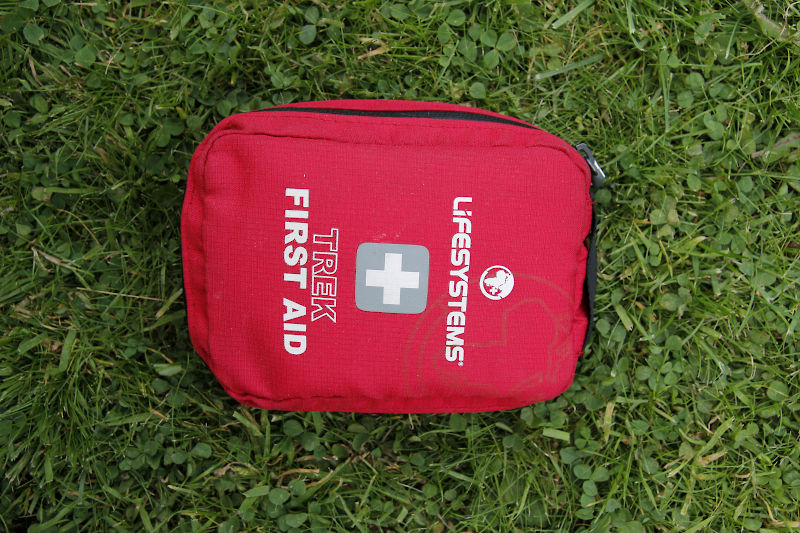
Waterproof Phone Pouch
With the crappy weather we can get in the UK, a waterproof phone pouch is one of the first items I pack for a camping trip! Not only does it keep my phone dry, with the YOSH Waterproof Phone Pouch I can still use touchscreen, allowing me to use GPS, take photos and make calls in torrential rain if necessary!
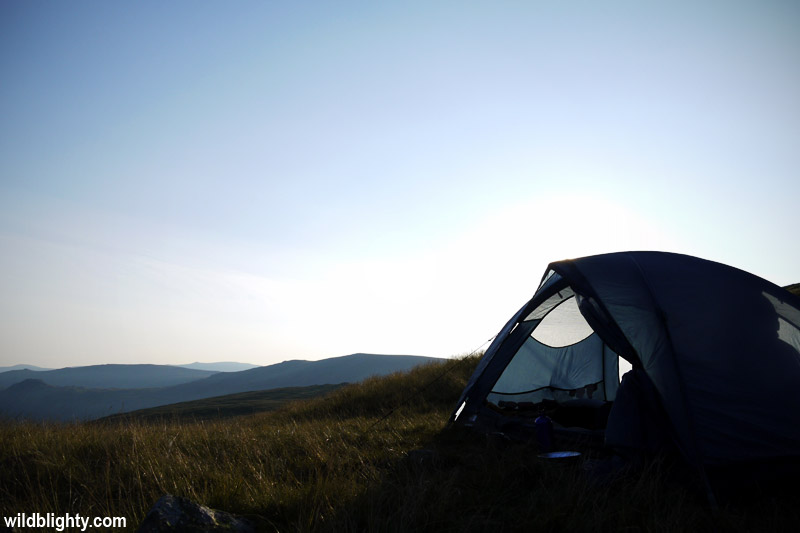
Dry bag
I use a small Uncle Paul Boat Dry Bag to keep my valuables and tech protected from both external (rain) and internal (water, food supplies etc) sources of moisture.
Mini Shovel/Toilet Roll
I don’t wish to see your poo, and I’m pretty sure you don’t wish to see mine! Please don’t ruin a beautiful spot through laziness…I carry a Sea to Summit Pocket Trowel which weighs a meagre 150g. A small amount of toilet roll folded up also makes it into my backpack. That said I haven’t needed to use it to date!
Map & Compass
A map and compass together with the knowledge to use it. Don’t rely solely on your smartphone as it could let you down (or you could drop it down an impossible to recover from place – like amongst the boulders on the summit of Glyder Fach :D). I use a Silva classic compass.
Toothbrush & Toothpaste
I personally don’t want to go to bed with peanuts and tuna lodged between my teeth! If your weight conscious you can saw off the handle of the toothbrush.. Travel toothpaste is preferable.
Gaffa Tape
Approx 1 metre of quality gaffa tape. Wrap it around your water bottle or stick it to itself, simply unravel to use. This can help with emergency repairs to kit and equipment – think a tear in your tent, a broken zip on your waterproofs, a snapped tent pole etc
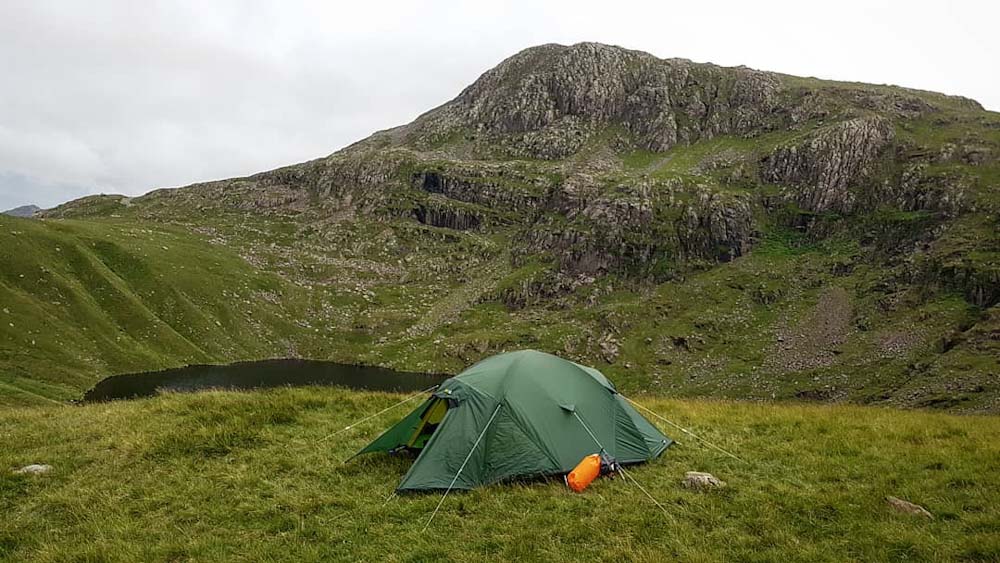
Cord
Approx 2-3 metres of cord. This can be used for emergency repairs to kit and equipment – think snapped shoe laces or tent guy ropes. More practical uses include a makeshift washing line to dry wet clothes in your tent vestibule, or to tie equipment to your rucksack.
Tech
Phone/Camera
A Smartphone and a separate camera (if you have one). In terms of cameras I previously used a Canon DSLR, however at approx 1.3kg (with lens) it blew my luxury item weight allowance out of the water! I therefore now use a compact camera, specifically a Sony RX100 IV – a very capable substitute for a DSLR, for me providing the perfect balance between price, performance, size and weight – the latter being 270g, perfect for wild camping!
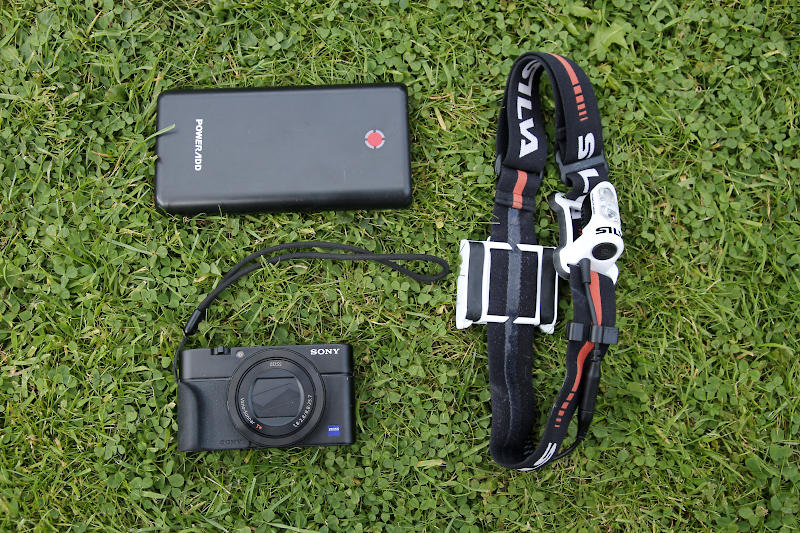
Head Torch
A head torch for night navigation, reading or using around the tent when dark. As of 2025 I use the versatile PETZL Actik Core – which comes with a rechargeable lithium battery and can also be used with AAA batteries. My previous head torch (Silva Trail Runner) would still undoubtedly be preferable for night trail running – however I broke it and I don’t so as much running as I once did!
Power Bank
Running out of power sucks in many ways!, hence I carry a Power Bank to ensure my devices remain charged – when I use my smartphone for GPS and photos my battery lasts no more than a day. A 5,000 or 10,000 mAh power bank provides a good balance between weight and capacity – something like the Anker Zolo Power Bank should do it.
Clothing
Waterproof Jacket
I carry a waterproof jacket even in favourable conditions, it acts as an extra layer and of course given how changeable mountain weather can be I’d rather be safe than sorry! I currently own the Mountain Equipment Rupal.
Waterproof Pants
If the weather forecast is for persistent rain I’ll substitute waterproof pants in place of mountain pants and use thermals underneath If I need to. Whilst cheap waterproof pants will do the job they tend not to be breathable and are generally super baggy. I prefer fitted pants with air vents for all day comfort.
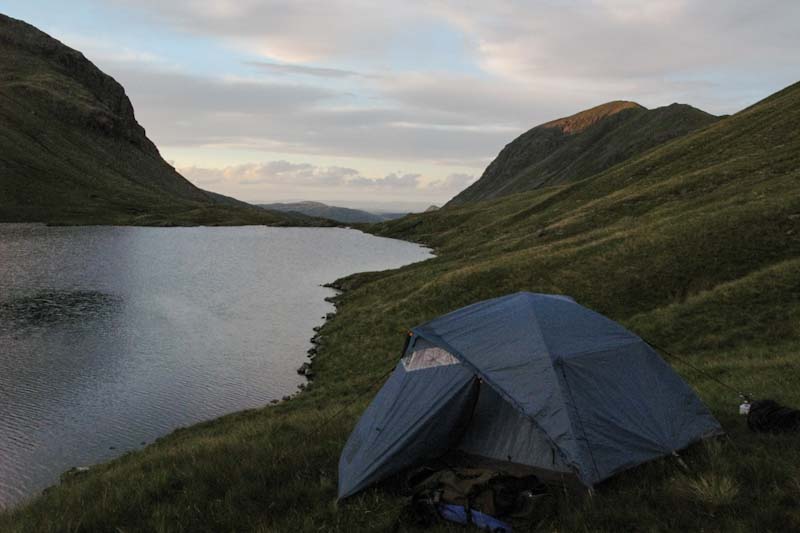
Base Layers
Thermals pants and a thermal top will provide additional warmth when on the move or for those cold nights in the wild, I’ve been surprised just how cold it can get during the night on the summit of a mountain – even in the summer months!
Neck Gaiter
A neck gaiter (e.g. a Buff EcoStretch) has multiple uses, I’ll start off using it as a head or wrist band and transform it into a beanie if it gets a bit chilly!
Gloves
Thin gloves can keep you toasty at altitude.
Conclusion
As you can see there is a fair bit of kit needed for wild camping! – which I’ve personally built up over a period of years. When starting out you could forgo certain items – like a cooker, which then means you don’t need pans, gas etc. That said most items if looked after properly should last years, and of course if you already spend time outdoors you’ll have some of them already.
Please note – as an Amazon Associate, I earn from qualifying purchases. It doesn’t cost you anything extra, but your purchases help support the site. Thanks!
You could quite easily go crazy and spend a lot of cash on the high-end brands and ultralight kit – I’d say I’m in the mid-range really, but if you want to spend a fortune got for it (using my amazon links please :D)! The most important thing for me is to get out there and explore wild places, have fun with friends and experience the great outdoors in the unique way only a night under the stars in the middle of nowhere can provide.





















